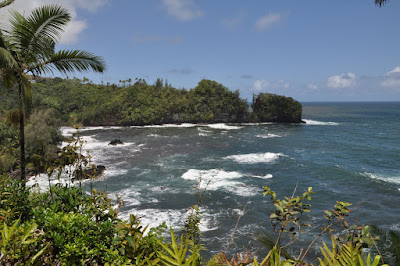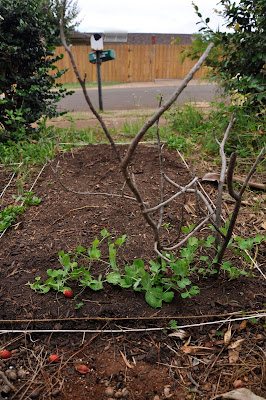This also means that I can't use chemicals as insecticides or herbicides. It would be very easy to spray noxious chemicals to rid our outdoor haven of all that annoy us. The bugs wouldn't bug so much, nor would the weeds. These chemicals are very effective in killing all things, the "bad" along with the "good." However, it just so happens that plants and insects evolved together (go figure). A believe it or not, a common plant defense against "bad" bugs is "good" bugs. There are a whole bunch of different kinds of beneficial bugs out there. I don't have the breadth of knowledge nor the desire to cover it all, but this will allow me to talk about one of my favorites: the praying mantis.

The praying mantis, also called mantids, are very cool looking insects. They get their common name from the way they appear to be praying while still and just before striking. Their alien-esque appearance is only matched by its otherworldly appetite for bugs. If you have ever seen one in action, you know what I'm talking about. They come in a wide range of colors, and sizes, some adorned with army-like camoflauge. They are stalkers, meaning that they will sit and wait til an unknowing bug crosses it.

While living in Taiwan, I had the opportunity to experience raising a mantis. You may not know this but mantises are related to the cockroach. They developed long, powerful forelegs, built to snatch its prey with lightning quickness and agility. I gained such pleasure watching them take out unsuspecting crickets, devouring them tail-first, eating up every last moisty gut. Mantids usually live for about3-4 months, and the ones I had were already 3 months old when I got them. Although they weren't with me long, I had the full experience of seeing how they live and interact (in a controlled terrarium).

Mantids start very small and eat aphids and such in their young days. This is why they are called upon as pest control. As they grow, they continually eat larger and larger things. Some have even been known to eat small snakes, mice and hummingbirds. One caution is that they aren't picky about what they eat. They can and will eat "good" bugs, even cannabalizing other mantises. This is why you shouldn't keep two mantises in the same container (unless of course, you want to see them battle to the death).
Mantises are good pets as they are quite interesting to watch stalk and consume prey. Most of the time, however, they spend their time moving not at all. They often just hang about, waiting for an idiot bug to get close. Much like myself. You can have them walk around on you, but they can fly.
As mentioned before, they can be part of your toolkit in battling the seemingly endless hoards of insects out to do you and your plants harm. They are welcome in my yard and I am always delighted to come across one, if I ever see them. They are ninja of the garden, sometimes hiding right in front of you. Do you and your garden's health a favor and consider matises and the host of other good fighters when dealing with little pests in your attempt to tame the wild outdoors.
























